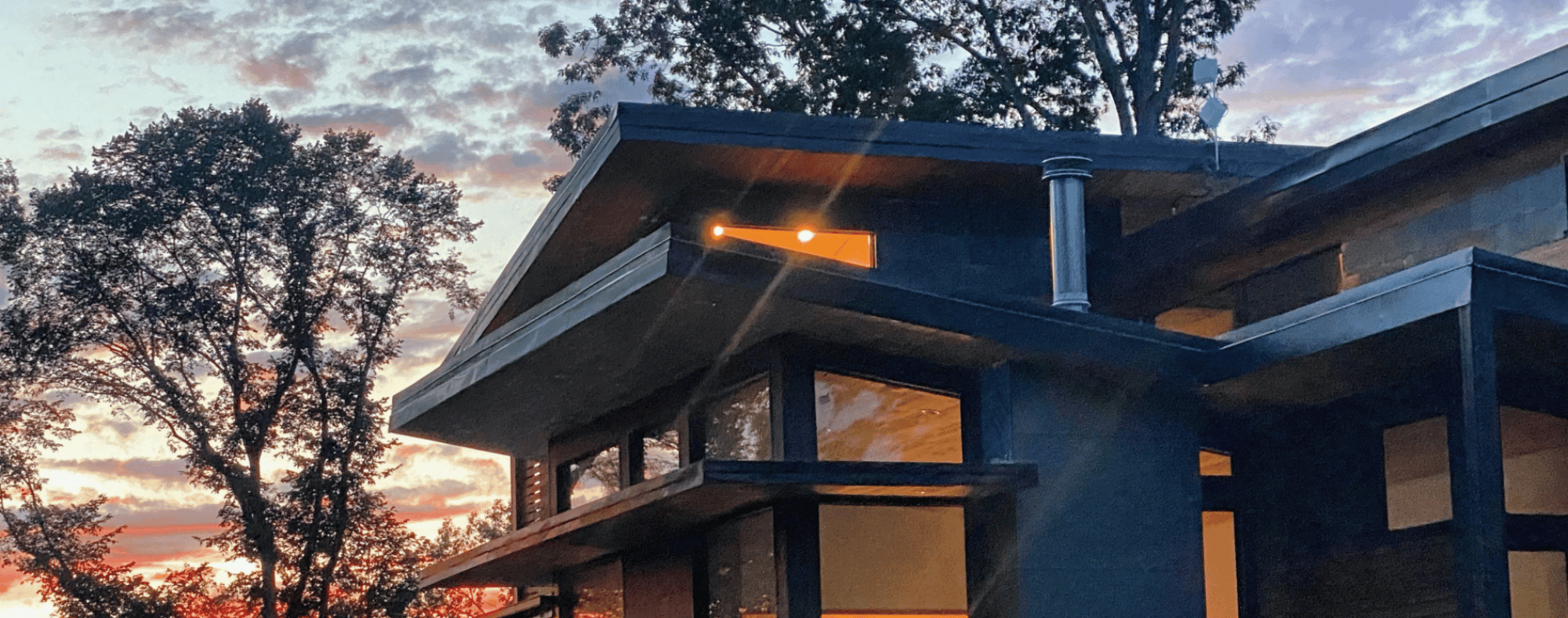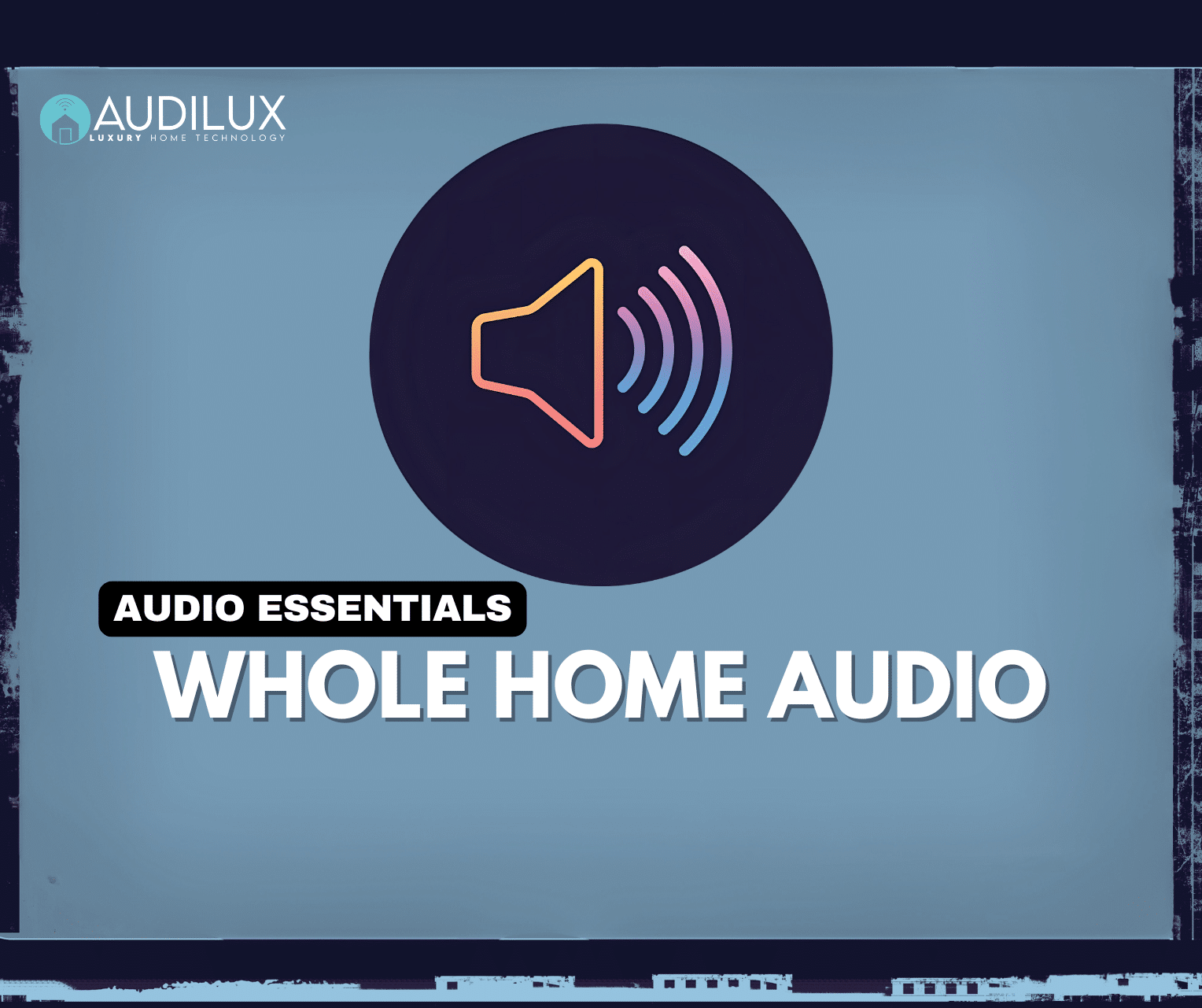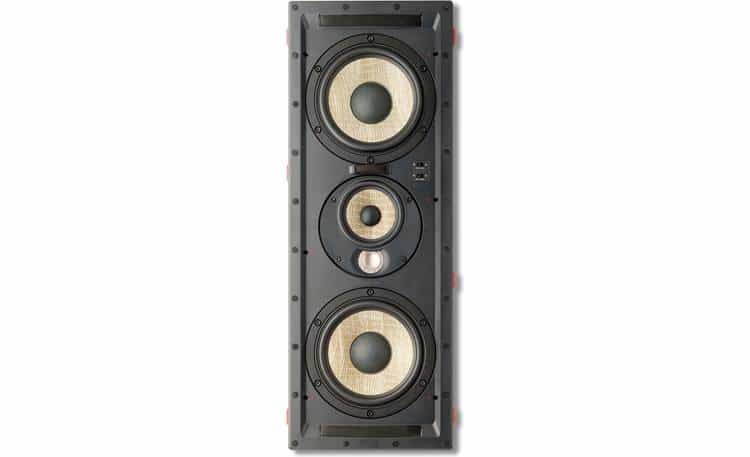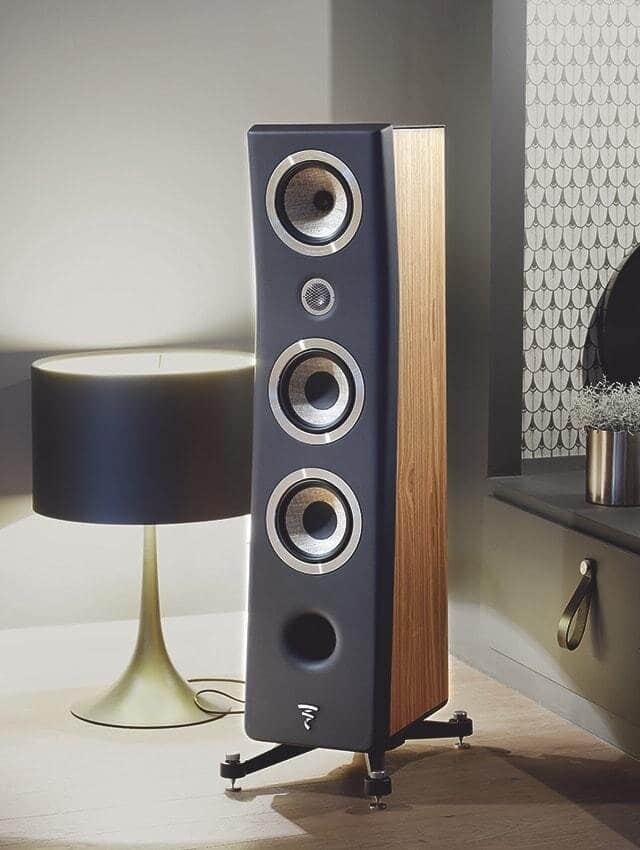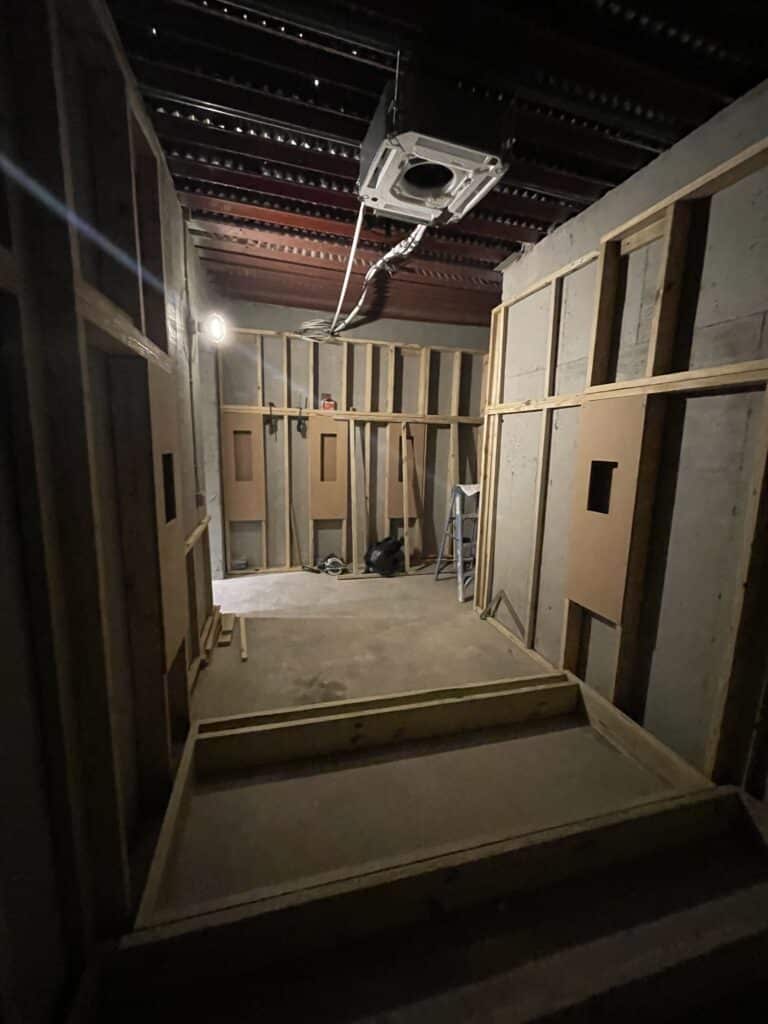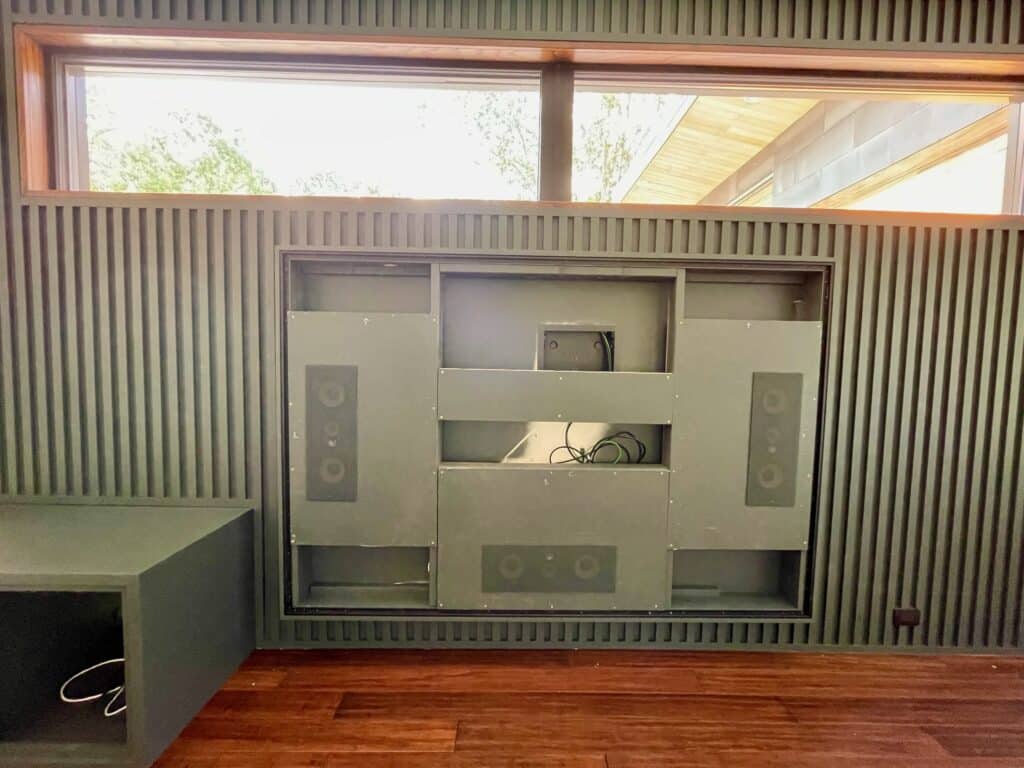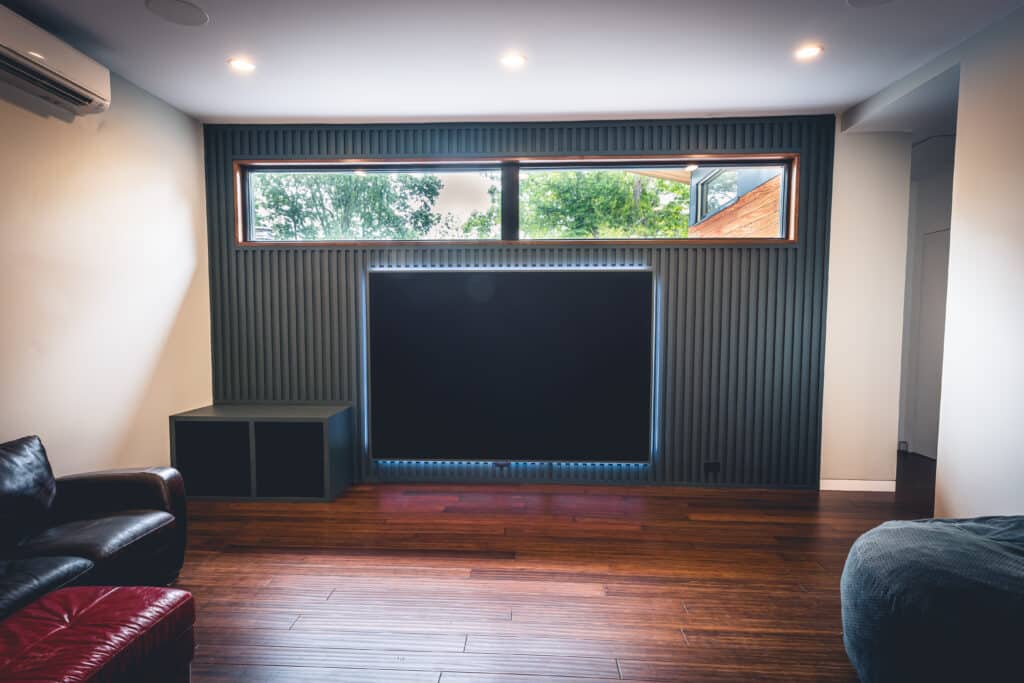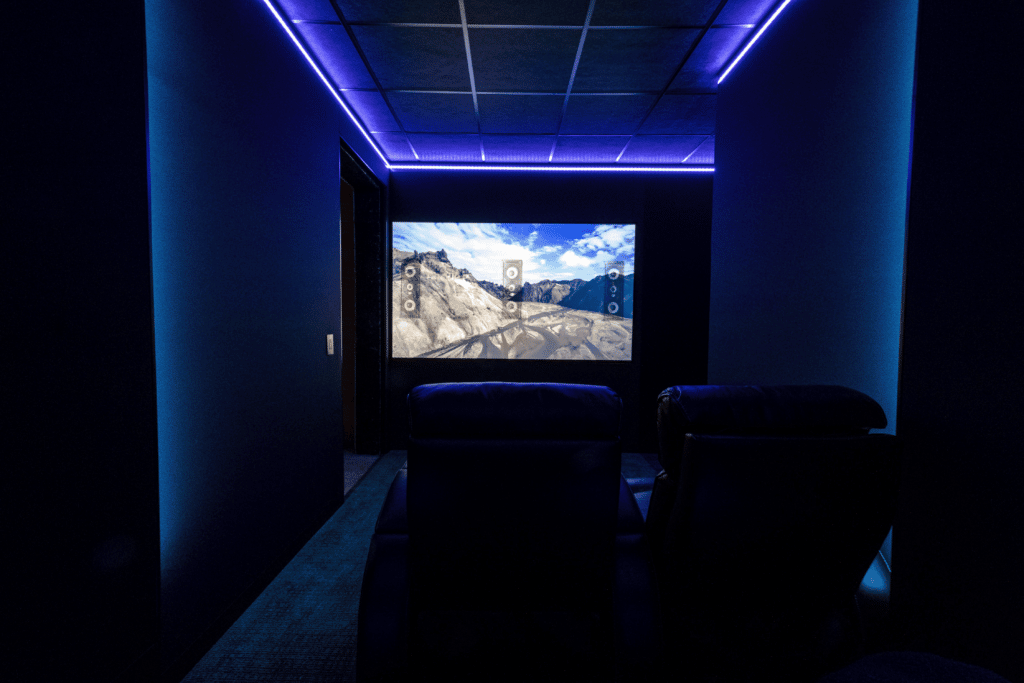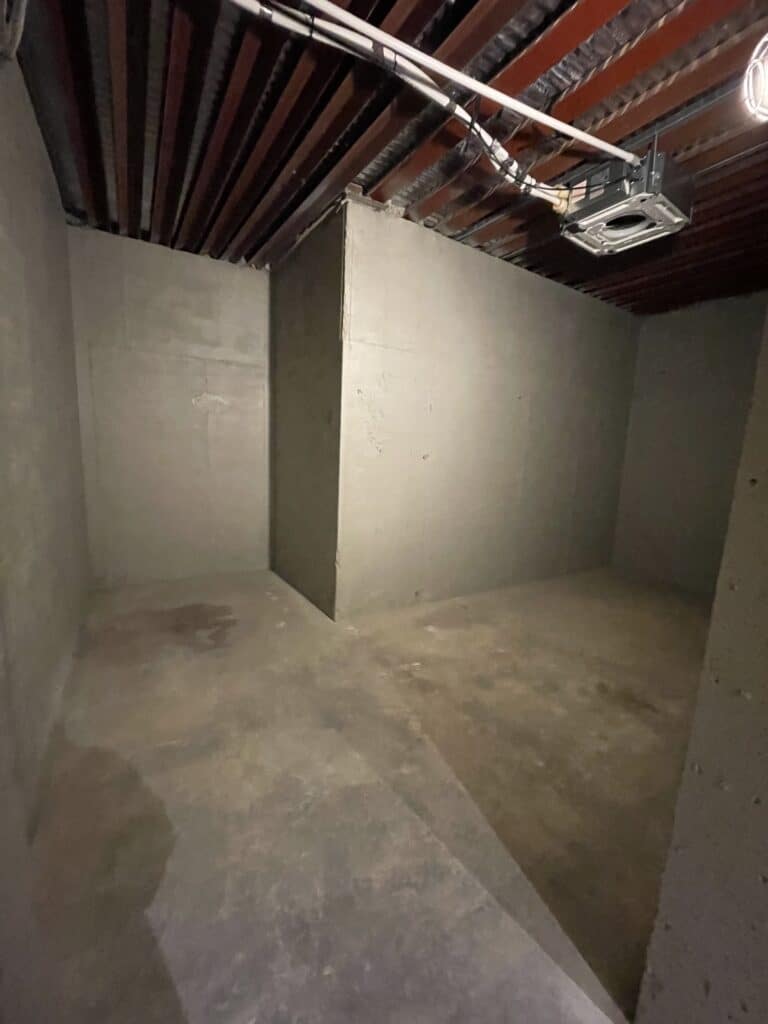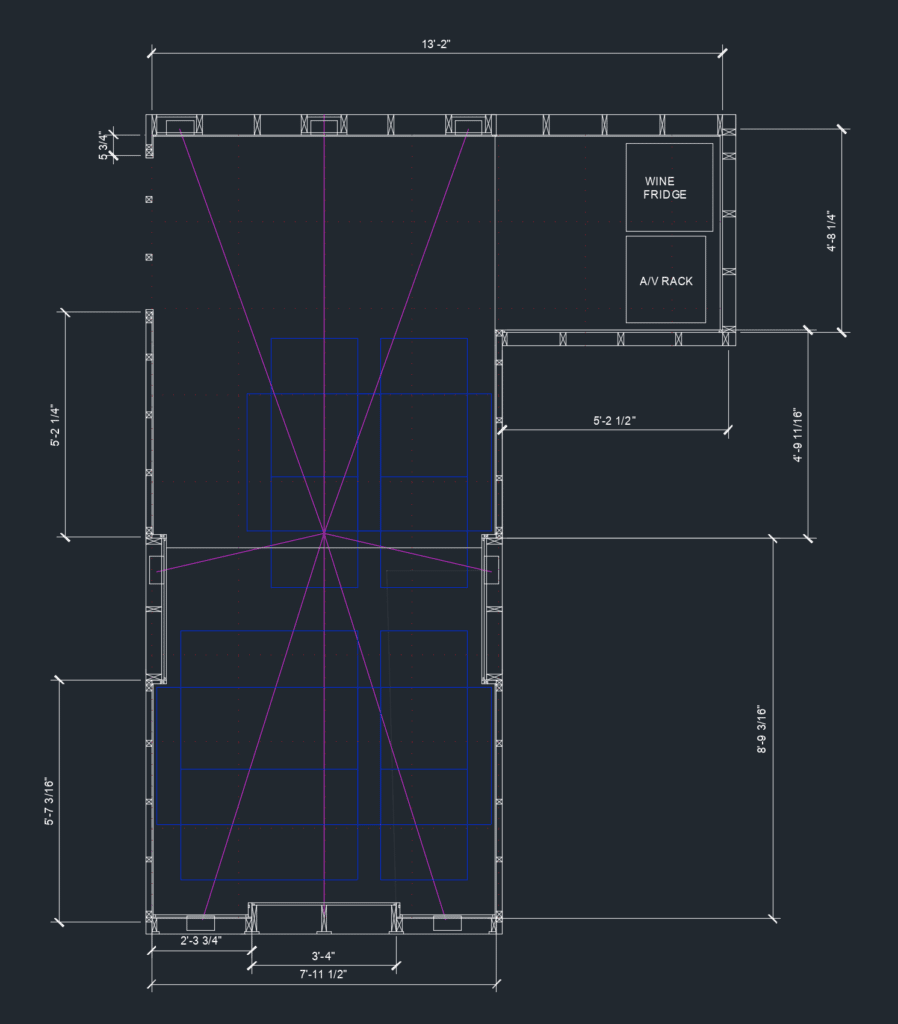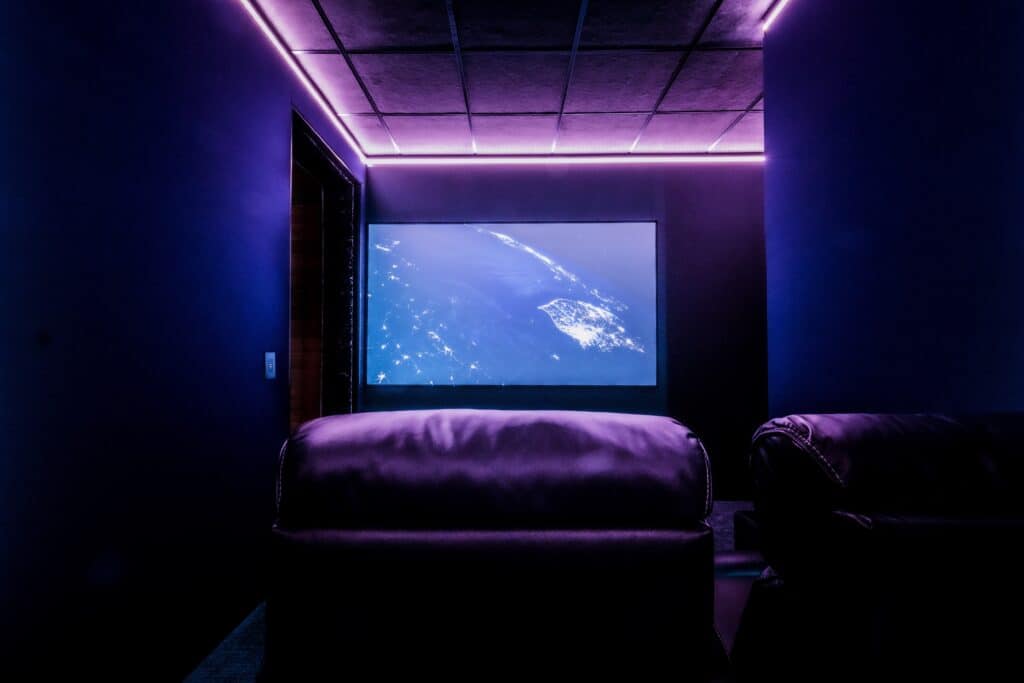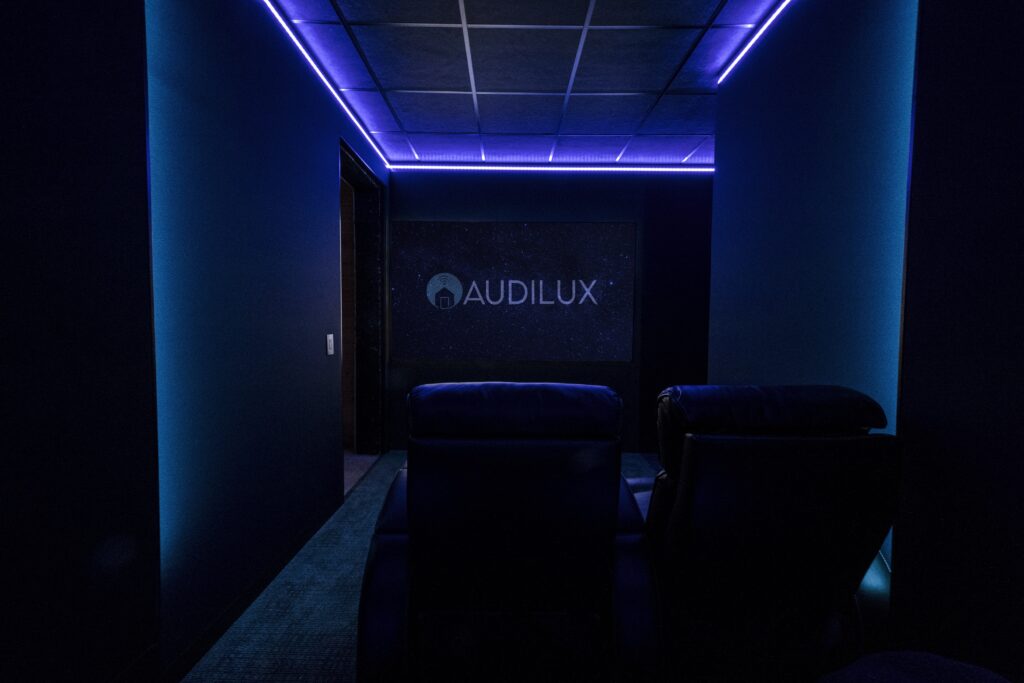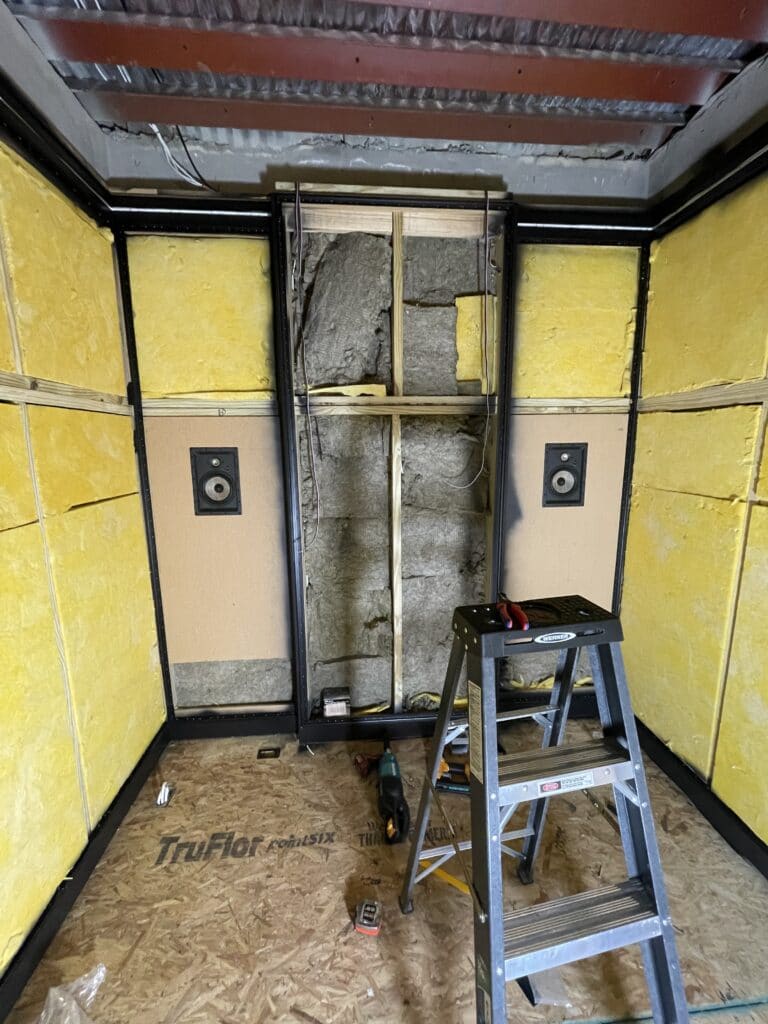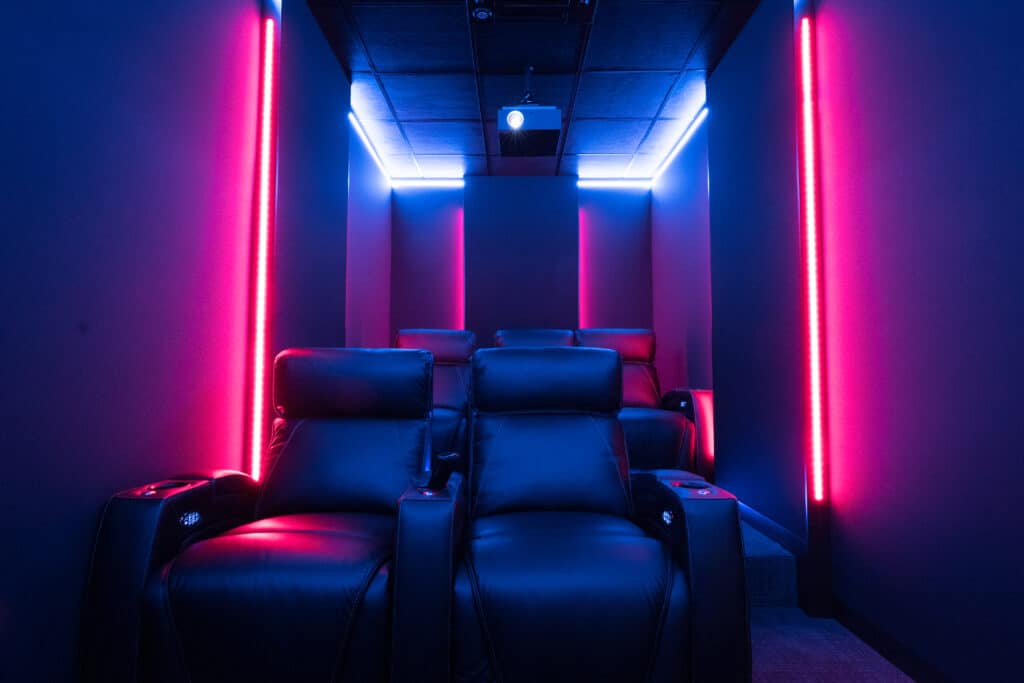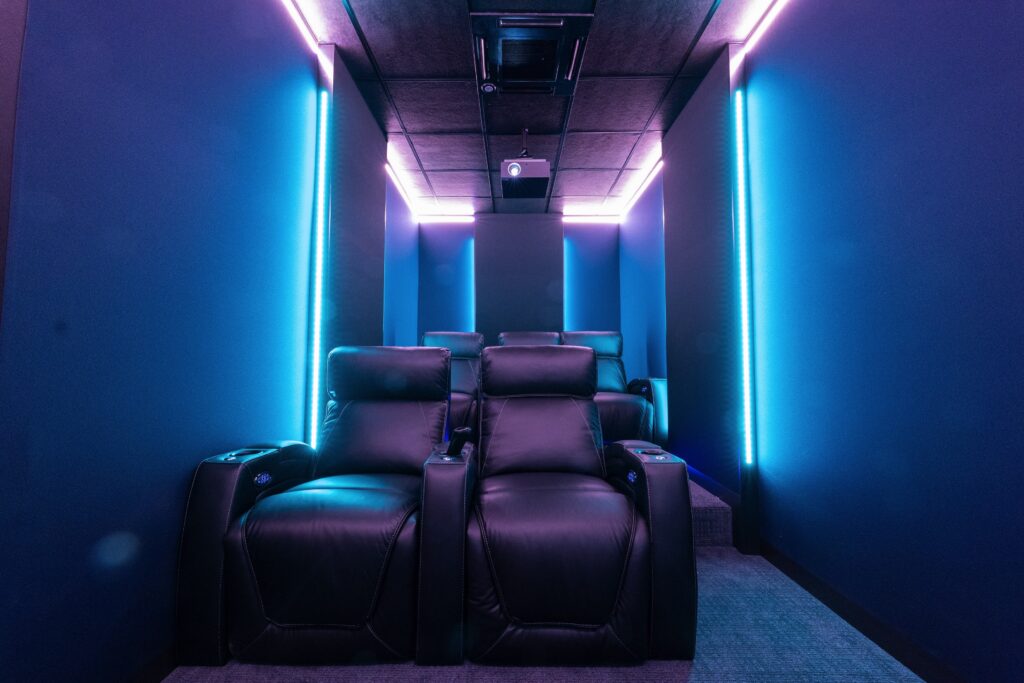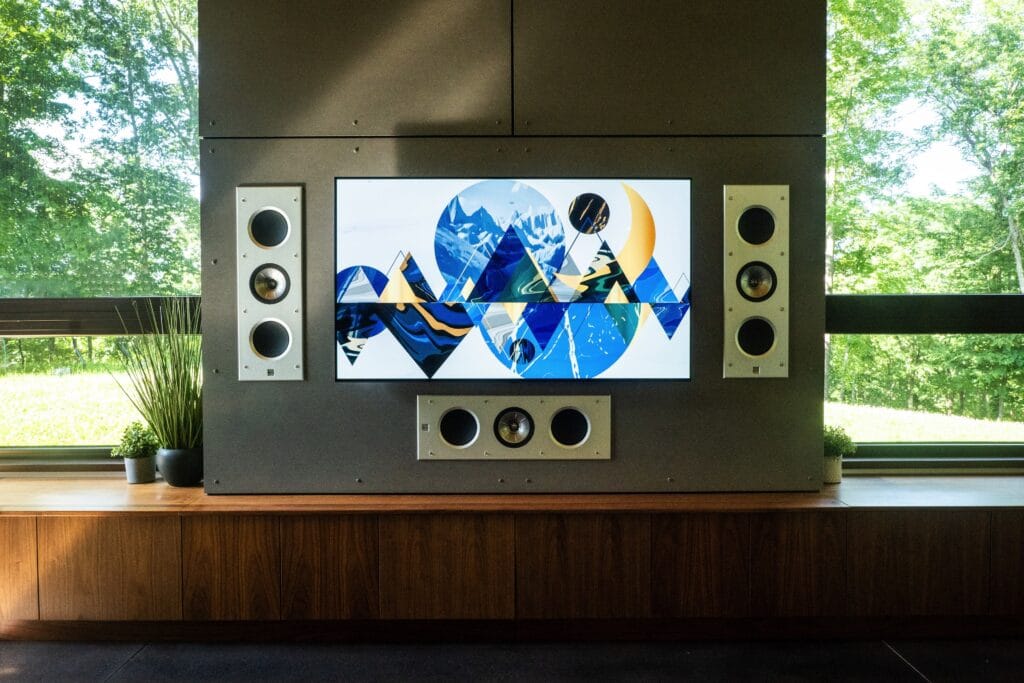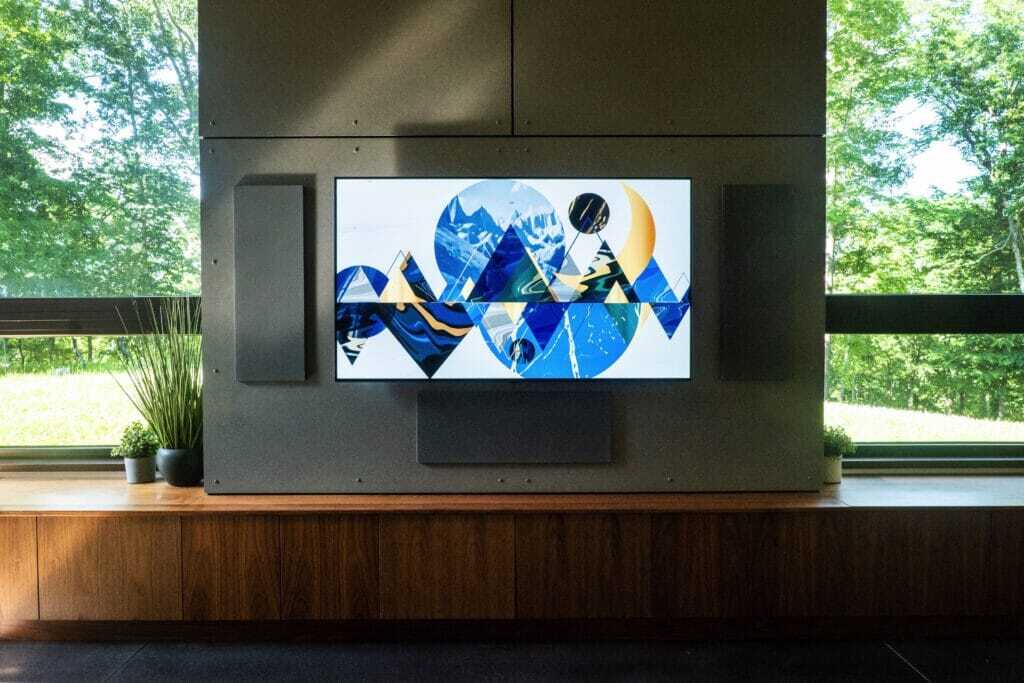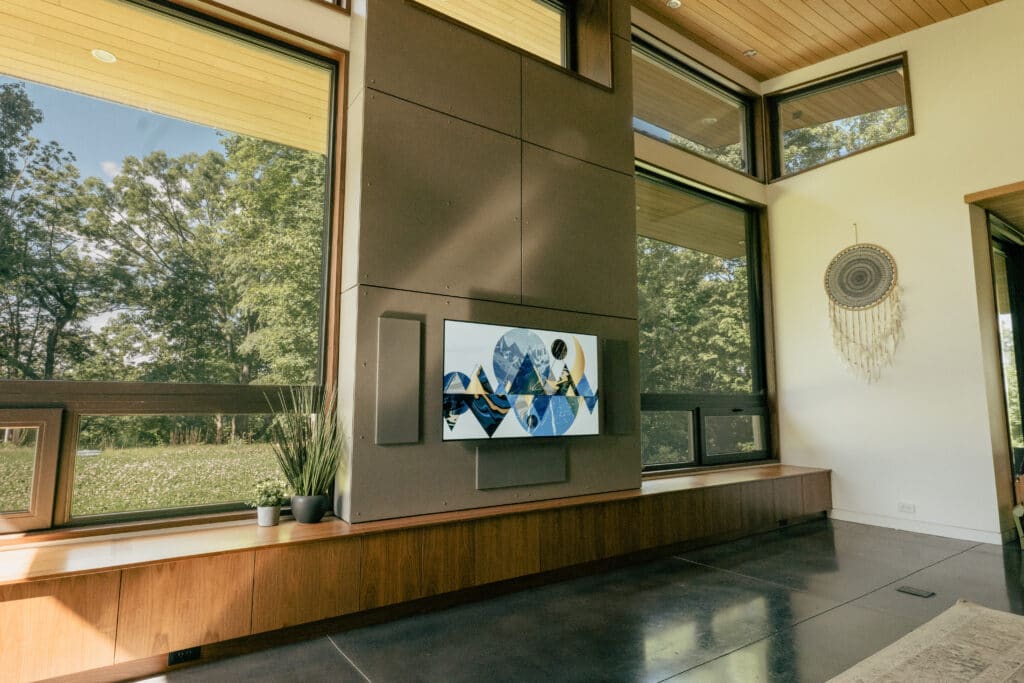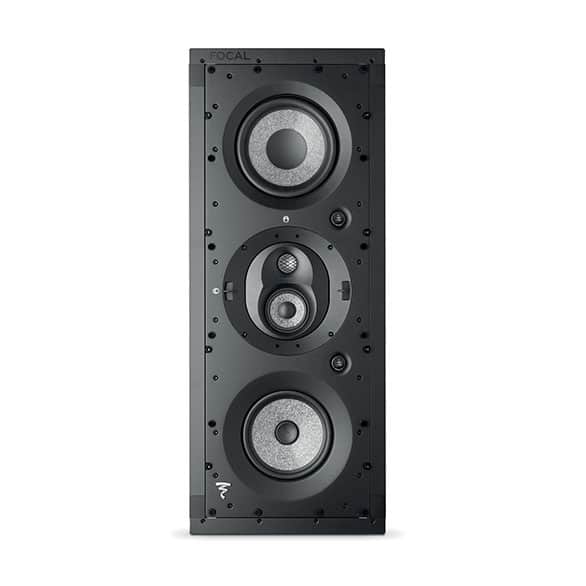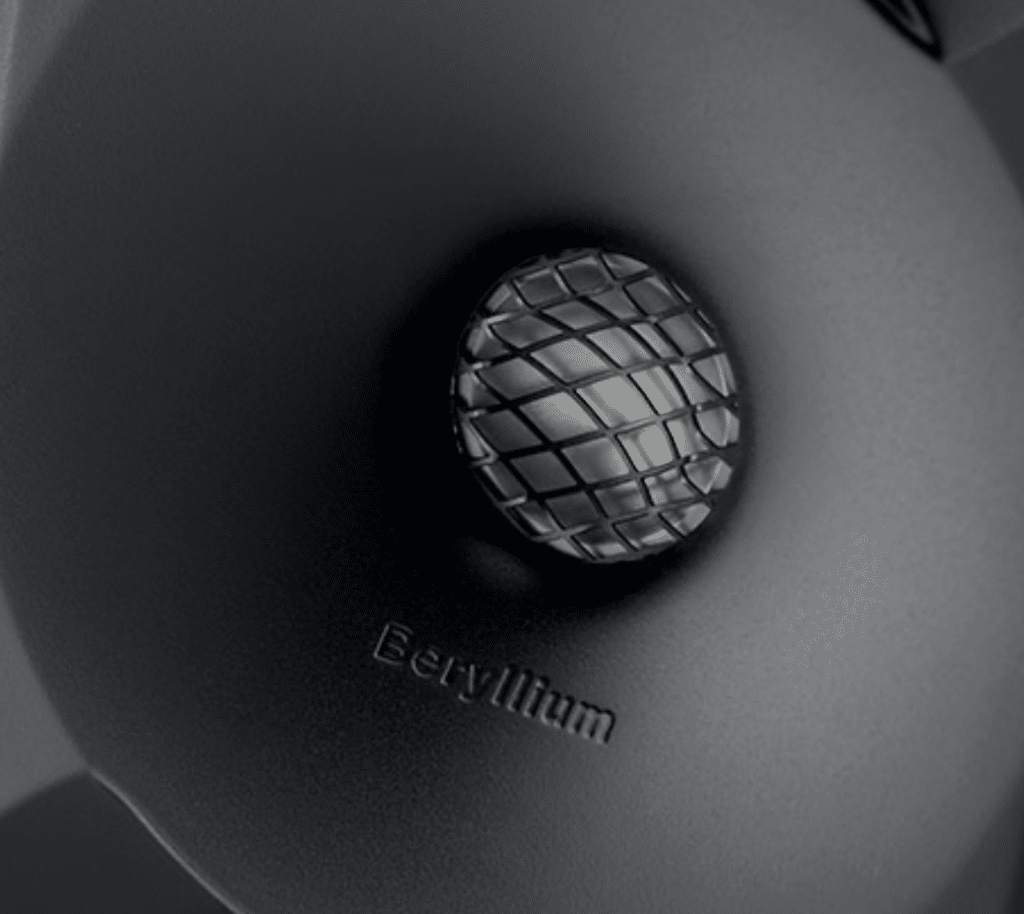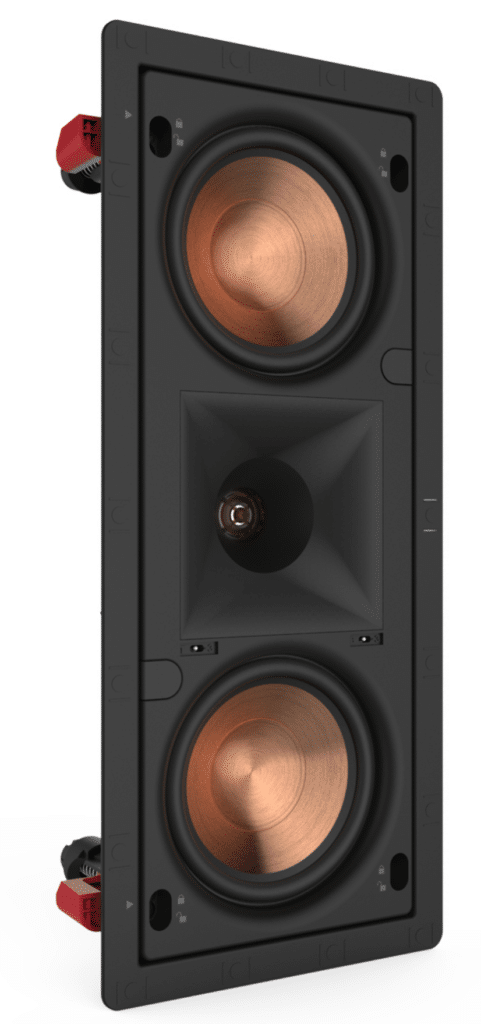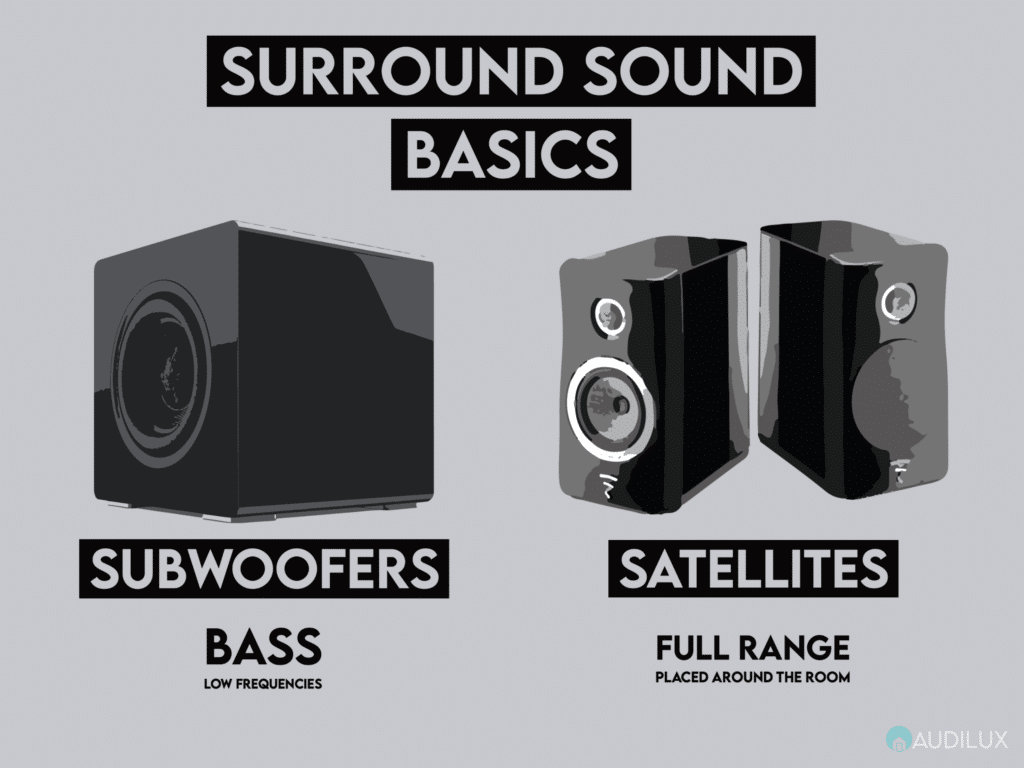Last Modified:
Most of our favorite memories have a soundtrack, and a whole-home audio system isn’t just about sound; It’s about creating memorable moments and adding real value to your home. Whether you’re hosting a party, unwinding after a long day, or taking in the news over morning coffee, the right audio system can transform your space.
Let’s explore what makes whole-home audio such a game-changer and how the experience comes together.
What is Whole Home Audio and How Does It Work?
A whole home audio system offers centralized control from a single, easy-to-use interface. The system allows you to play the same music throughout your house or listen to different sources in various rooms. With strategically placed speakers and careful planning, you can have high-quality sound in every corner of your home.
Understanding “Zones”: A House Divided
Think of “zones” as different areas in your home where you can control the audio independently. A zone could be your living room, master bedroom, or even exterior spaces like your pool deck or garden. You can play music in one zone, like the kitchen, while someone else listens to a podcast in another, like the home office.
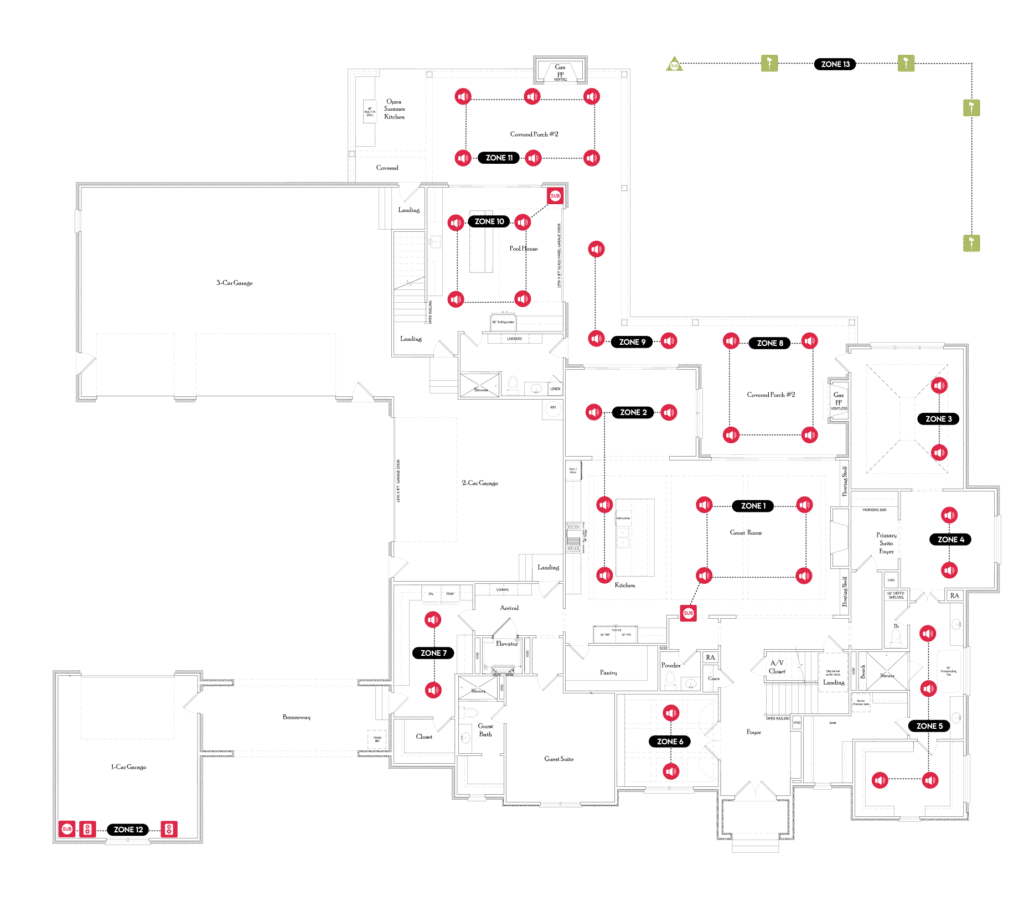
You can control the volume in each zone, choose what to listen to, and even group zones together to play the same music throughout larger areas, giving you complete control over your home’s soundtrack.
The Key Parts of a Whole Home Audio System
| Name | What it does | Options |
| Speakers | Turn the audio signal into sound you can hear. | In-ceiling, in-wall, or outdoor speakers. |
| Amplifier | Boosts the audio signal so it’s strong enough for the speakers in each zone. | A multi-channel amplifier that powers several zones. |
| Controller | The “brain” that manages your music sources, zones, and how you interact with the system. | Often a dedicated device or a simple app on your phone. |
| Network Gear | Helps the audio signal travel smoothly over your home’s network. | A good Wi-Fi router or network switch. |
| Sources | Where your music comes from. | (Spotify, Apple Music), your digital music library, or even a record player. |
These parts connect using wires or wirelessly, ensuring a reliable and high-quality sound. Understanding these components helps you see how installers create these systems and why having one central control point makes everything so easy.
The Benefits of a Whole Home Audio System
A well-designed whole-home audio system offers advantages in several key areas: making entertainment more immersive, increasing your home’s value, simplifying your life, integrating with your smart home, and creating personalized sound environments. Imagine the kitchen becoming the hub of family life, with an impromptu dance party keeping dinner prep lively and fun.
Elevate Your Entertainment
Whole home audio transforms your listening and viewing experience. Enjoy balanced, rich sound in every room, whether you’re hosting a movie night or just relaxing with music. The system’s strategically placed speakers and smart technology ensure consistent sound quality everywhere, eliminating those annoying dead spots or volume differences. This allows you and your family to enjoy music and movies with greater impact, wherever you are in the house. You won’t have to crank the volume in one room to hear it in another.
Boost Your Home’s Value and Appeal
Sleek, built-in speakers and hidden wiring create a clean, modern look that signals quality craftsmanship to potential buyers. Integrated audio systems are recognized as a desirable feature, often adding to your home’s valuation. You can expect to recoup a good portion of your investment when you sell, as a multi-room audio system demonstrates modern living and thoughtful upgrades.
Smart Home Tech is Reshaping Home Values
Studies show that adding smart home features, including advanced audio systems, can increase a property’s market value by 3-5%. Buyers are drawn to the enhanced safety, energy efficiency, and convenience these upgrades offer, often leading to quicker sales and better offers. For instance, in Austin, homes with integrated audio closed 12 days faster last year compared to those without. Consider the scenario of a potential buyer hesitating between two similar homes, choosing the one equipped with advanced audio and seamless smart home integrations because it offered a more modern living experience.
This can make the difference between securing a premium sale and missing out on a lucrative offer.
(Source: National Association of REALTORS® Smart Home Survey) (“How Smart Home Technology Can Boost Your Property Value”, n.d.)
Seamless Living with Smart Home Integration
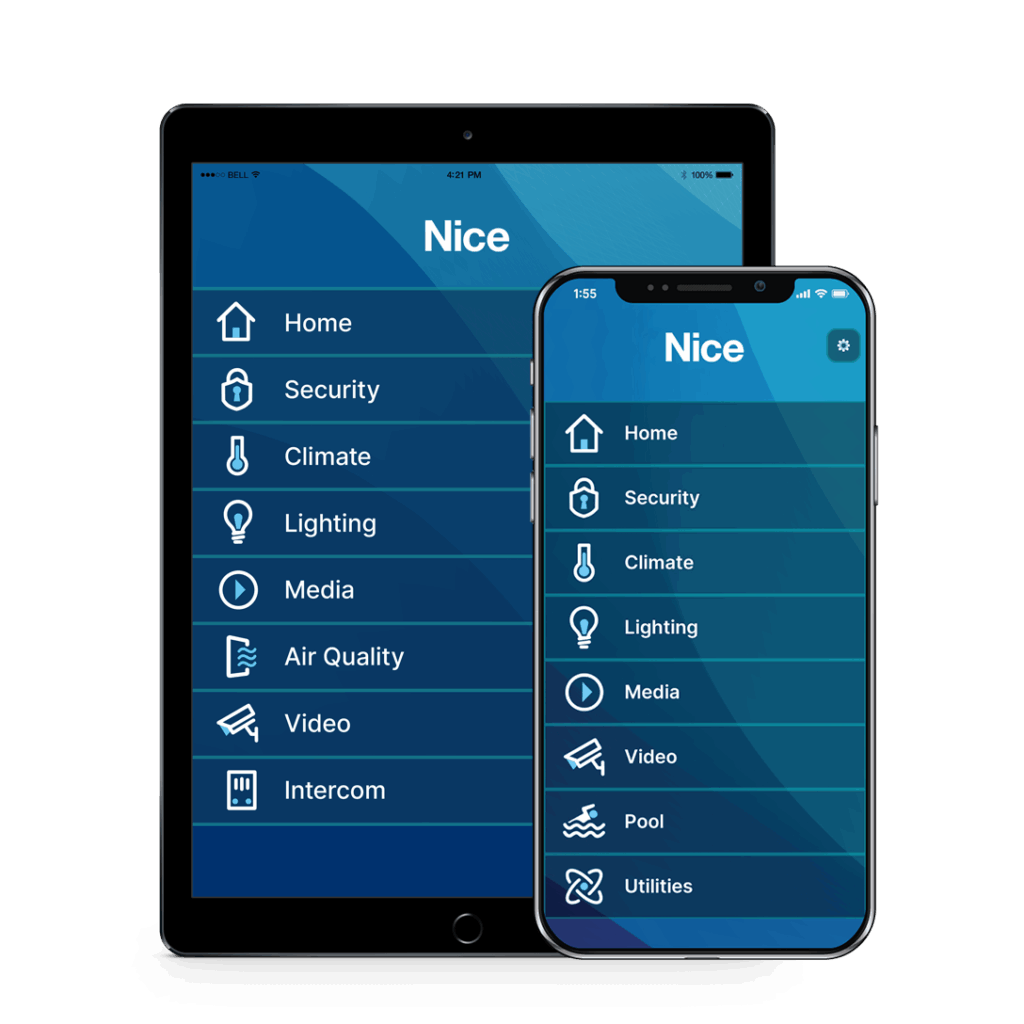
Connecting your audio system with your other smart devices creates an integrated home experience. Imagine a “Good Morning” scene that gently raises your blinds, starts a news podcast in the kitchen, and gradually brightens your lights. This automation makes your home feel more intuitive and responsive to your daily life. When your audio system works with platforms like Bluesound, it can react to occupancy sensors or your daily schedule, further reducing the need for manual controls.
Personalized Sound for Every Room and Every Mood
Audio zoning allows you to tailor the sound experience to individual preferences and activities. Let the kids enjoy their music in their rooms while you listen to a podcast in the home office. Or, play party music on the backyard deck while keeping indoor music mellow. This level of control prevents conflicts over what to listen to and at what volume, promoting household harmony and a personalized environment.
Outdoor Audio: Extending Your Soundscape
Don’t let your music stop at your doorstep. Whole home audio systems can seamlessly extend to your outdoor living spaces, transforming patios, decks, and gardens into immersive entertainment zones. Imagine hosting a summer barbecue with perfectly distributed music or enjoying a relaxing evening under the stars with ambient sound. Outdoor audio solutions are designed to withstand the elements while delivering exceptional sound quality.
High-Performance Outdoor Solutions
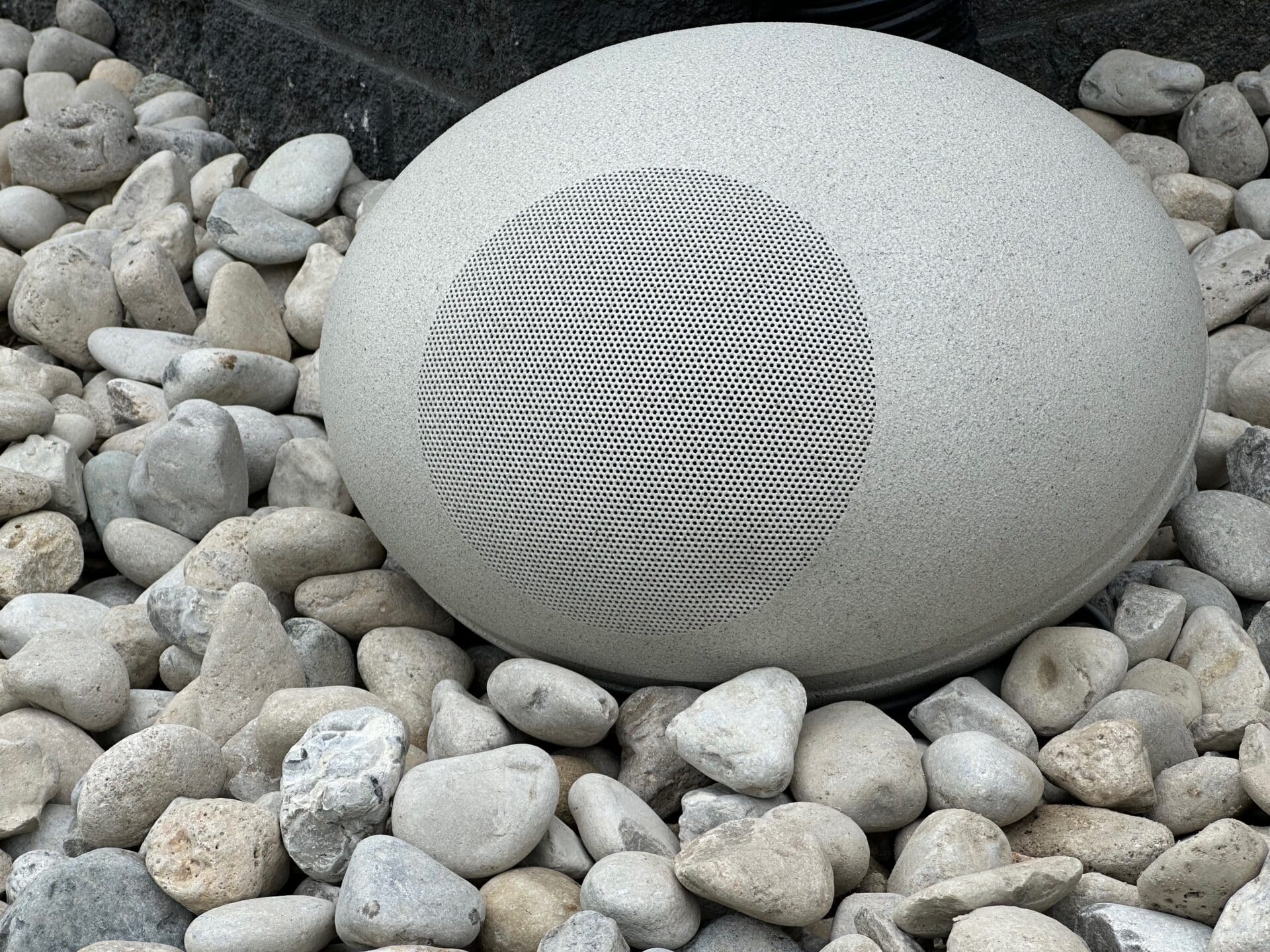
For those seeking robust outdoor audio, brands like Focal and Theory Audio Designs offer specialized solutions. Focal’s outdoor speakers are engineered for durability and sonic excellence, ensuring your music sounds great regardless of the weather. Theory Audio Designs provides innovative options, including their new bollard speakers and subwoofers, which offer discreet yet powerful sound distribution, ideal for creating a sophisticated outdoor audio experience without compromising aesthetics.
Strategic Placement for Outdoor Zones
Similar to indoor zones, outdoor audio benefits from strategic placement. Bollard speakers can be strategically placed throughout your garden or patio to provide even coverage, while discreet stone speakers can blend into landscaping. In-ground subwoofers can add a deep, resonant bass to your outdoor soundscape, making parties and gatherings truly memorable.
Wired vs. Wireless: Which Whole Home Audio System is Right for You?
Choosing between a wired and wireless system involves considering sound quality, installation ease, scalability, and budget. Both types use similar core components like speakers, amplifiers, and controllers, but they differ in how the audio signal reaches the speakers.
Sound Quality and Installation: What’s the Difference?
| Wired | Top-notch stability, virtually no interference. | Requires running wires, often best done during construction or renovation. |
| Wireless | Good sound quality if your network is strong; occasional dropouts are possible. | Easier to install in existing homes, fewer holes in walls. |
Wired systems offer the most reliable, interference-free performance, ideal for audiophiles. Wireless systems use Wi-Fi or dedicated networks to connect speakers, making installation simpler, especially in existing homes. However, in areas with a lot of wireless activity, you might experience minor interruptions.
Cost and Scalability: How Do They Compare?
Wired systems typically have higher initial costs due to labor and materials for running cables. However, they scale predictably, even for very large homes. Wireless systems often have lower installation costs upfront; however, you may need to invest in additional network equipment, such as access points, to ensure consistent audio bandwidth as you add more zones.
We always recommend hardwiring everything, particularly on new construction.
Best Fit for Your Home?
If you’re building a new home or doing a major renovation where walls are open, a wired system offers the best long-term reliability. For existing homes where cutting into walls is not ideal, wireless systems are a great solution. Many people opt for a hybrid approach, using a wired network for main connections and wireless for final speaker links, balancing performance with flexibility.
When I design a system, I consider both coverage and performance. We typically specify a high-quality mid-level speaker as the standard throughout the residence for background listening. In areas where you like to entertain, such as the kitchen or living room, we can take things up a notch, opting for higher-performance models where it counts, while optimizing value everywhere else.
Top Whole Home Audio Streamers and Systems
Different brands offer unique features, ecosystems, and levels of integration. While systems like Apple Home and Google Home can work well for smaller deployments, a professionally designed system is often the best choice for larger homes and estates, ensuring seamless performance and scalability.
Professional Options:
- Bluesound: Known for its user-friendly wireless multi-room streaming and a wide range of speaker options, integrating easily with other smart home devices.
- Sonos is another prime option, celebrated for its incredibly user-friendly wireless multi-room streaming and robust ecosystem.
Personally, I vote Bluesound.
For a deeper dive into how these two leading brands stack up, check out our article: Looking for a Sonos Alternative?
Pro Tip: Sometimes, more is more.
Determining the right number of speakers for a room is about ensuring the sound is spread out evenly. For rooms with 10-foot ceilings, we use the room’s square footage to guide our recommendations. The idea is to have enough speakers so that no matter where you are in the room, the sound is clear and at a comfortable volume without needing to turn it up too high in one spot. As a quick rule of thumb, you can consider one in-ceiling speaker for every 100 square feet (e.g., a 200 sq ft room would need two speakers).
Using the Focal 300ICW8 as a reference, here are suggested speaker quantities and coverage areas for background music applications in rooms with 10′ ceilings.
| Small Room (e.g., 10’x12′) | ~120 sq ft | 1 Pair | Up to 120 sq ft |
| Medium Room (e.g., 15’x20′) | ~300 sq ft | 2 Pairs | ~150 sq ft per pair |
| Large Room (e.g., 20’x30′) | ~600 sq ft | 3-4 Pairs | ~150-200 sq ft per pair |
| Open Concept/Great Room | Varies Greatly | 4+ Pairs | Strategic placement is key; aim for ~150-200 sq ft per pair |
Note: These are general guidelines for background music. For more immersive or critical listening, speaker density may need to be increased. The Focal 300ICW8 is a capable in-ceiling speaker designed for excellent sound dispersion.
Audio is one of the best parts of a Smart Home
When your audio system works with your other smart devices, your home entertainment becomes a seamless part of your overall home automation. Effortless control is at your fingertips with systems like Elan, which orchestrates your entire smart home experience, including your audio, lighting, climate, and security, through a single, intuitive interface.
How Automation Makes Your Audio Experience Better
Automated routines, often called “scenes,” can control multiple devices at once. For example, a “Movie Night” scene could dim the lights, turn on the TV, and start playing your favorite movie soundtrack at the perfect volume. With Elan, these routines are easily customizable, eliminating manual steps and creating smooth transitions between different moods and activities in your home.
Planning Your Whole Home Audio System Installation
A well-thought-out installation plan is key to getting the best sound and ensuring your system looks good in your home.
Perfect Speaker Placement for Sound and Style
Deciding where to place your speakers involves balancing where sound needs to reach with how visually distracting they are. In-ceiling speakers are great for filling a room with ambient sound without being visually distracting. In-wall speakers can provide more focused sound while remaining discreet. Sometimes, a beautiful set of Hi-Fi towers can add to a room’s ambience. Outdoor speakers need to be weatherproof and placed strategically to avoid unwanted echoes.
Best Practices for Wiring and Network Setup
Using high-quality speaker cable for speakers and at least CAT6 cable for network components is crucial for a reliable system. It’s also a good idea to keep your audio traffic separate from other internet activity to prevent interference.
Why Professional Installation Matters
Hiring certified professionals ensures your system is set up correctly. They can fine-tune the sound for each zone, ensure music plays in sync across rooms, troubleshoot network issues, and keep your system’s software up to date. Their expertise guarantees that your audio system performs at its best and remains reliable for years to come.
HTA Certified: Ensuring Quality and Expertise
When investing in a whole home audio system, choosing a certified professional is paramount. The Home Technology Association (HTA) certifies custom integrators who meet rigorous standards for quality, service, and technical expertise. HTA Certified companies have demonstrated proficiency in designing, installing, and supporting sophisticated home technology systems, including whole-home audio. This certification provides peace of mind, assuring you that your system will be installed by a reputable and knowledgeable professional. (“What is the HTA Certification criteria?”, 2024)
Learn more about HTA Certification: HTACertified.org
Is a Whole Home Audio System Worth it?
Yes. A whole home audio system enhances your daily life with convenience and sound quality, and it boosts your home’s resale value. While the initial cost can range from $5,000 to $25,000 or more, depending on complexity, buyers increasingly value integrated technology, meaning you’ll likely recoup a substantial portion of your investment.
Key cost factors include the number of zones you wish to cover, the quality of equipment chosen, and the installation requirements. For instance, adding more zones increases the overall cost as it requires additional speakers and amplifiers, while opting for higher-end equipment ensures superior sound quality but may raise the price. Installation costs can vary depending on whether you choose a wired or wireless system, and professional installation usually comes at a premium but ensures optimal performance.
Understanding these elements will help homeowners better estimate the cost of their unique project.
How much does whole home audio cost?
The price varies based on the number of speakers, amplifier power, control options, and network needs. A basic 4-zone wireless setup typically starts around $5,000, while a fully integrated wired system for a larger home with advanced controls can exceed $20,000.
What equipment do I need?
A complete system includes your music sources (like streaming devices, media servers, or a turntable), a central controller, amplifiers, speakers, and a user interface (like an app or touchscreen).
You can also add components like audio-video receivers for home theater integration.
How is this different than Surround sound?
Unlike surround sound, which is limited to one room, whole home audio distributes sound throughout your entire house with independent control in each zone.
Ready to Transform Your Home’s Sound?
Let us help you design and install the perfect whole-home audio system. Experience effortless control and unparalleled sound quality throughout your entire residence.
References
- National Association of REALTORS. (n.d.). Smart Home Survey.
- Industry Averages and Expert Consultations. (n.d.). Whole Home Audio Costs and Smart Home Integration Benefits.
